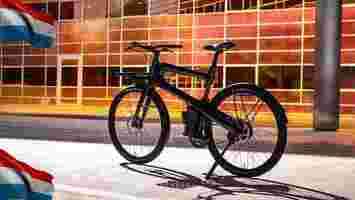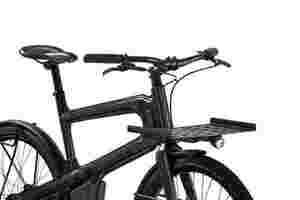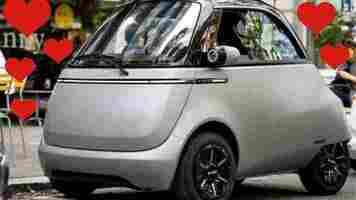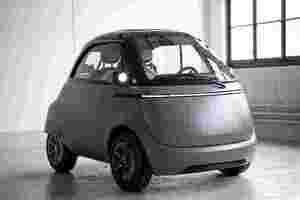Australia’s EV adoption is being needlessly held up by red tape
New South Wales Transport Minister Andrew Constance declared his support of the EV transition, stating that the Australian government should provide bigger incentives, the Sydney Morning Herald reports.

The minister proposed several measures, including subsidizing car parks with charging stations, waiving stamp duty, and giving access to transit lanes for drivers of electric cars.


He also added that the government needs to pick a “drop dead” date for the ban on petrol and diesel vehicle sales.
While Treasurer Dominic Perrottet has declared his intention to impose EV road tax in Victoria by July, Constance said that the government will not apply such a levy until electric vehicles make up 40 to 50% of the car market.
When that is the case, NSW will consider solutions to compensate for the tax revenue lost from a drop in fuel excise. Its approach will be distinctly different from the new Victorian system that will tax EVs at 2.5 cents ($1.9 cents) per kilometer.
If the government rolls out an electric vehicle tax too soon, “ What we will do is make ourselves the laughing stock of the world. The rest of the world will have moved to full manufacturing of electric vehicles and here we are sort of struggling,” Mr Constance remarked.
Do EVs excite your electrons? Do ebikes get your wheels spinning? Do self-driving cars get you all charged up?
Then you need the weekly SHIFT newsletter in your life. Click here to sign up .
This Dutch company proves ebikes can be made locally
What’s the first thing that comes to your mind when you think of the Netherlands? That’s right, weed bikes. But, despite being the country with the most bikes per capita , bikes are not manufactured in the Netherlands. In fact, even the country’s most famous bicycle company VanMoof makes their ebikes in Taiwan.

But as consumers are looking to buy locally, and manufacturers are feeling the pain of supply chain woes, one ebike startup is reaping the rewards of their mission to bring bicycle manufacturing back to the Netherlands.
They’re called Mokumono , and twin brothers Bob and Tom Schiller make up half of the tiny team at bike company. How does a company of four compete with the big players in the market? I sat down with Tom at our recent TNW conference to find out.
It’s all in the frame
The company’s secret sauce is its locally made frame. It’s a great example of materials innovation. Tom explains: “it’s constructed from two mirrored sheets of aluminum that are pressed into shape and welded together by a laser-wielding robot. This creates a strong and lightweight frame that is different from the typical tubular offerings.”
The tech is traditionally used to create car doors and was developed with tech production partner Witte van Moort in Vriezenveen.


Creating a product locally is highly efficient for ease of prototyping and overseeing assembly. Mokumono also gets green points for sourcing their other parts from throughout Europe, reducing their transport-related carbon footprint.
A solution to supply chain woes
Mokumono has facilitated frames for three bike companies which helps fund their own efforts, although Tom admits “we keep the specifics of the aluminum close to our chest.”
Crowdfunding that’s actually not a scam
I’ve written in the IoT space for over a decade. B2C is a tough space for young companies to raise money to create hardware products. Crowdfunding doesn’t guarantee success.
Heck, I even worked for a company that desperately tried to make stuff happen — and failed. Then there’s the scams. I’m looking at you, iFind and Skully . And that’s before I even get to the shit show that is Elio Motors – hope you didn’t lose your money there. (If you’re cynical like me, I recommend you take a look at r/shittykickstarters for some schadenfreude.)
Tom told me there are even stories of companies buying bikes on Alibaba and slapping a label on them to crowdfund as their own creation. Dodgy fuckers.
But Mokumono stands out from the crowd by selling some seriously nice bikes. I’m too short to ride one (FML), but they come in three sizes. The Delta S is a single gear bike with a Gates Carbon Belt Drive System, which removes the need for maintenance or grease and is impossible to derail. It offers a battery range of 60 kilometers. A full charge takes two hours. The Delta C is a couple of kilos lighter and enables riders to sit semi-upright.
Supply chain reckonings are facilitating a green economy for ebike manufacturers
For Tom, one of the biggest problems facing the ebike industry is how quickly they become obsolete. “The ebike lifespa n is actually going backward compared to traditional bikes. You can still ride a normal bike from 60 years ago with some repairs,”
Tom explains:
Funding is booming and there’s space for all
We spoke at length about the ebike funding landscape (I’ve two interviews with investors coming), and Tom had a lot of thoughts:
What advice would you have for someone wanting to start their own ebike company?
As the industry’s underdogs, I wanted to hear what tips Tom would have for others wishing to enter the industry. He explained:
Mokumono’s currently developing a new bike from the ground up launched in April 2022 with a removable battery and a lot more European-made parts. Watch this space for more news.
The unbearably cute Microlino EV is almost ready to hit European streets
Say hello to the Microlonino 2.0, the adorable EV that wants to bring bubble cars back. And it’s coming to Europe very soon.

Small and compact, it’s designed for the urbanites who might want a mini city-vehicle without the hustle of finding (or paying for) a large parking space.


Technically, the Microlino is a quadricycle , but we can definitely call it a retro electric bubble car, mainly due to its resemblance with the 1950s Isetta .
Unlike the Isetta, the Microlino 2.0 is powered by electricity. It will come in three models with different battery size and capability: Urban (6kWh battery), Dolce (10.5kWh), and Competizione (14kWh). These three versions will serve projected ranges of 95km, 175km, and 230km, respectively.
This is impressive for a microcar. For reference, the normal-sized Renault Zoe ZE40 R110 has a 255km range on a single charge.
Despite its tiny size, it has a 25hp motor and a top speed of 90km/h, which is more than one would need for urban driving.
Interestingly, this EV doesn’t have any side doors, but instead has a large front door from which the users can enter.
It’s interior is rather minimalistic, but does have a digital instrument panel, and a surprising 220L trunk volume.
And to add to its cuteness, the Microlino will come in eight cool colors, named after European cities.
Initially, the Mircrolino was expected reach customers at the end of 2021. The company announced as much in September, when it was setting up its production facility in Turin.
But the pandemic-induced supply chain shortages heavily impacted the Microlino too. As a result, the start of production needs to be postponed until all the necessary car parts are available.
According to the company , production is slated to begin in mid-March 2022. The first vehicles will be delivered to Swiss customers in April and May. Germany will follow soon after.
Nevertheless, the company promises to make up for the delay with a faster ramp-up. And I do hope that this spring we’ll be able to see the Microlino on the streets.
That’s the big question.
Microcars are an increasingly popular choice in China and Japan, but could they become the next big thing in Europe as well?
My guess is it’s indeed very possible. People are getting more environmentally conscious, micromobility services are booming, and there’s an increasing demand for reducing traffic congestion in urban centers.
Add these to the relatively low $14,500 price tag, and the odds are high. Up until now, at least 24,000 buyers have already placed reservations for a Microlino, and perhaps that’s an indication of a new trend.